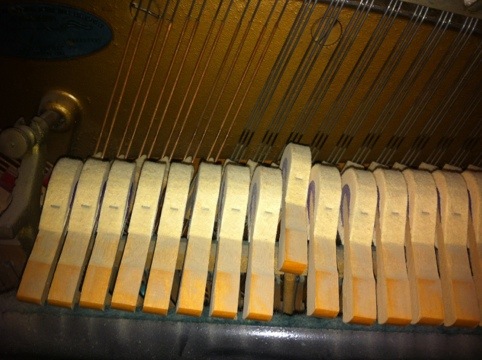What is Regulation?
The action of a piano has thousands of parts and is a marvel of engineering. A piano action has seen hundreds of years of development and refinement. There are many adjustments on a piano action that make sure that all the parts work as they should. Regulation is the process of setting these adjustments so that the action can transfer the energy from your fingers into the strings. An action that is out of regulation can loose power, can loose the speed at which it can repeat a note, and can become uneven from one note to the next. Poor regulation can affect the tone of the piano and can prevent you from being able to play softly.
When you press a key very slowly the hammer moves toward the string and lets loose just before touching the string. This allows the hammer to hit the string and bounce free so it doesn’t interfere with the string’s vibration. When this process of “let-off” happens too soon, it becomes difficult to play softly because the hammer has to jump a further distance after the key has let loose of it. This also affects the amount of power the hammer can give to the string and therefore affects the tone of the piano.
Sometimes the action gets “lost motion” which is travel of the key without any matching travel of the hammer. This condition makes the piano feel very spongy and loose. In severe cases it can even cause the hammer to bounce and double strike when it hits the string.
Complete regulation can involve several days of work, but there are many refinements of regulation that can be done in small amounts of time that can keep the action performing at its best.

